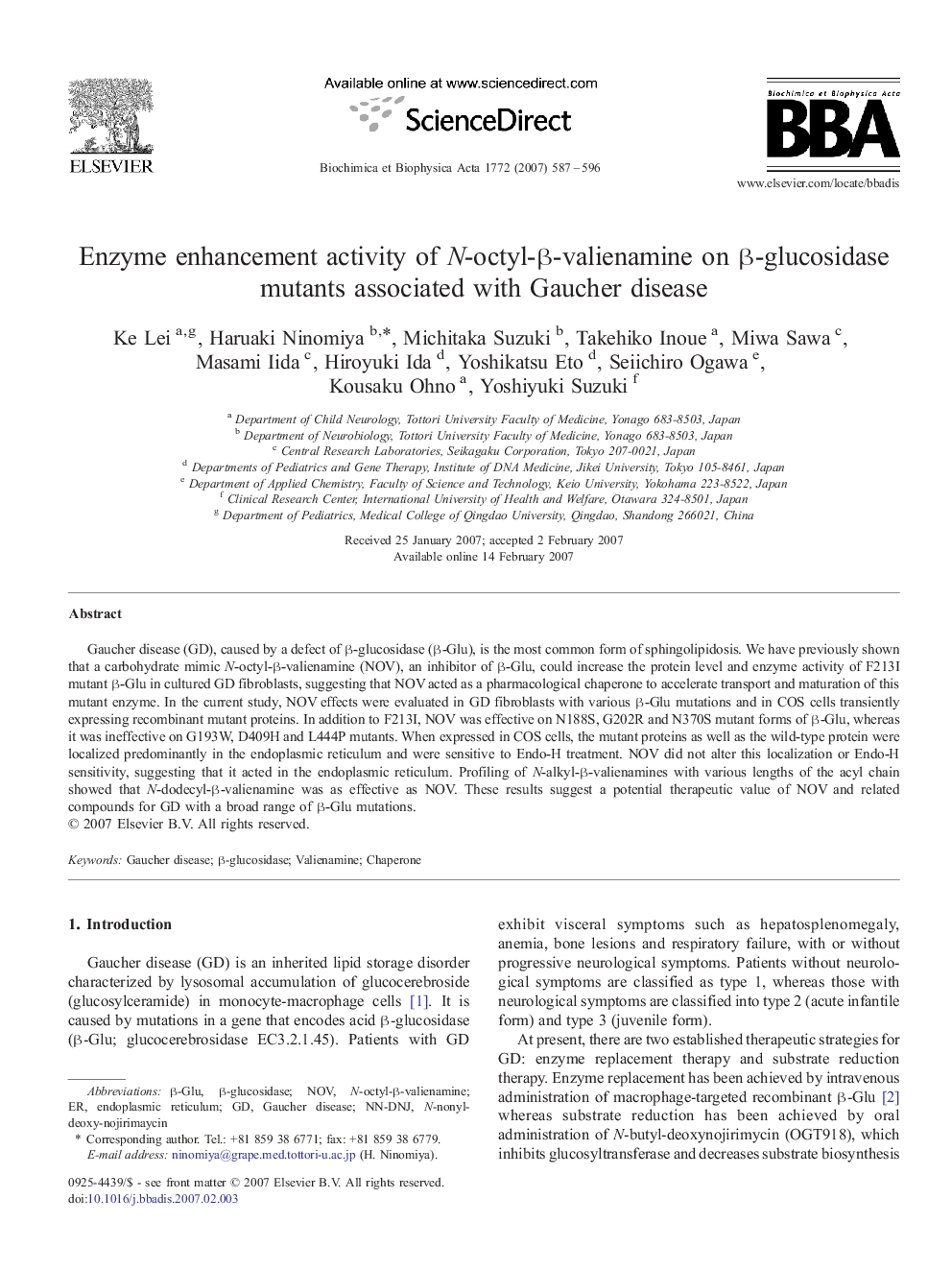| Article ID | Journal | Published Year | Pages | File Type |
|---|---|---|---|---|
| 1905877 | Biochimica et Biophysica Acta (BBA) - Molecular Basis of Disease | 2007 | 10 Pages |
Gaucher disease (GD), caused by a defect of β-glucosidase (β-Glu), is the most common form of sphingolipidosis. We have previously shown that a carbohydrate mimic N-octyl-β-valienamine (NOV), an inhibitor of β-Glu, could increase the protein level and enzyme activity of F213I mutant β-Glu in cultured GD fibroblasts, suggesting that NOV acted as a pharmacological chaperone to accelerate transport and maturation of this mutant enzyme. In the current study, NOV effects were evaluated in GD fibroblasts with various β-Glu mutations and in COS cells transiently expressing recombinant mutant proteins. In addition to F213I, NOV was effective on N188S, G202R and N370S mutant forms of β-Glu, whereas it was ineffective on G193W, D409H and L444P mutants. When expressed in COS cells, the mutant proteins as well as the wild-type protein were localized predominantly in the endoplasmic reticulum and were sensitive to Endo-H treatment. NOV did not alter this localization or Endo-H sensitivity, suggesting that it acted in the endoplasmic reticulum. Profiling of N-alkyl-β-valienamines with various lengths of the acyl chain showed that N-dodecyl-β-valienamine was as effective as NOV. These results suggest a potential therapeutic value of NOV and related compounds for GD with a broad range of β-Glu mutations.
